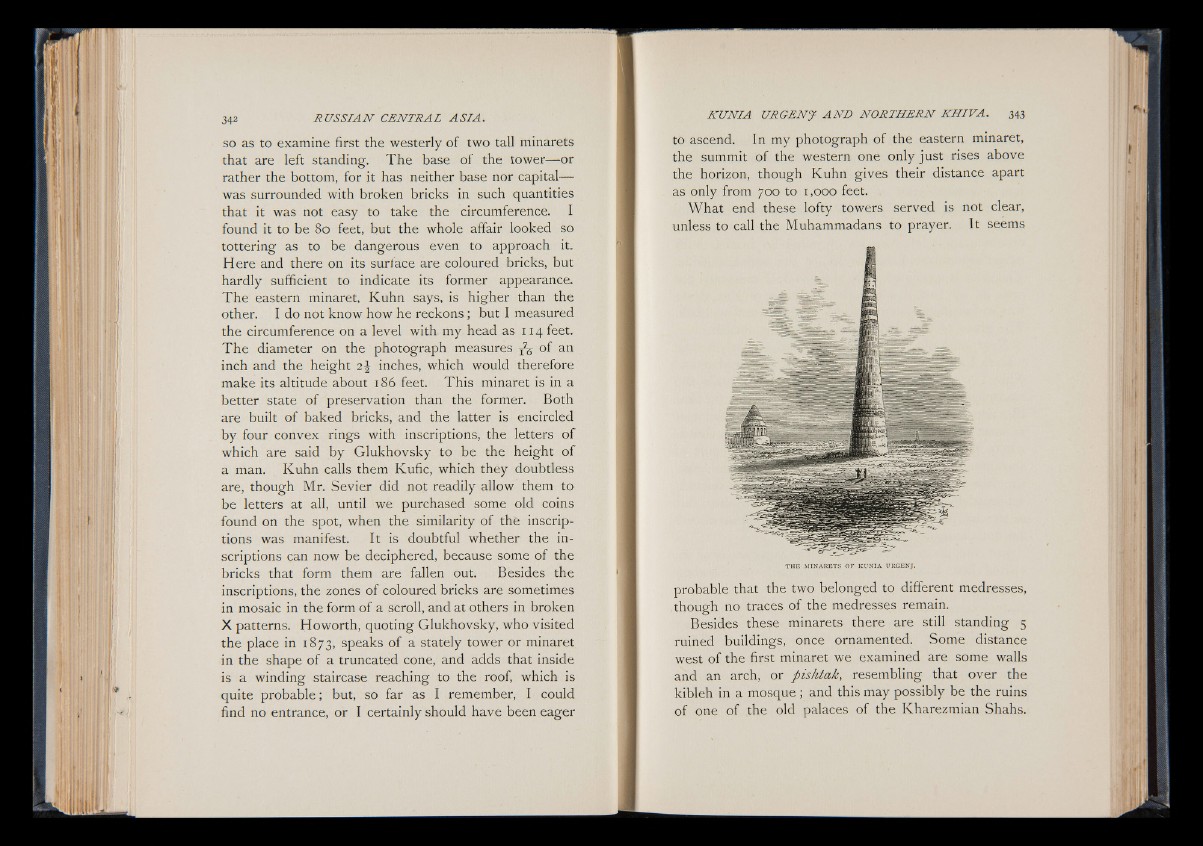
so as to examine first the westerly of two tall minarets
that are left standing. The base of the tower— or
rather the bottom, for it has neither base nor capital—
was surrounded with broken bricks in such quantities
that it was not easy to take the circumference. I
found it to be 80 feet, but the whole affair looked so
tottering as to be dangerous even to approach it.
Here and there on its surface are coloured bricks, but
hardly sufficient to indicate its former appearance.
The eastern minaret, Kuhn says, is higher than the
other. I do not know how he reckons; but I measured
the circumference on a level with my head as 114 feet.
The diameter on the photograph measures ^ of an
inch and the height 2\ inches, which would therefore
make its altitude about 186 feet. This minaret is in a
better state of preservation than the former. Both
are built of baked bricks, and the latter is encircled
by four convex rings with inscriptions, the letters of
which are said by Glukhovsky to be the height of
a man. Kuhn calls them Kufic, which they doubtless
are, though Mr. Sevier did not readily allow them to
be letters at all, until we purchased some old coins
found on the spot, when the similarity of the inscriptions
was manifest. It is doubtful whether the inscriptions
can now be deciphered, because some of the
bricks that form them are fallen out. Besides the
inscriptions, the zones of coloured bricks are sometimes
in mosaic in the form of a scroll, and at others in broken
X patterns. Howorth, quoting Glukhovsky, who visited
the place in 1873, speaks of a stately tower or minaret
in the shape of a truncated cone, and adds that inside
is a winding staircase reaching to the roof, which is
quite probable; but, so far as I remember, I could
find no entrance, or I certainly should have been eager
to ascend. In my photograph of the eastern minaret,
the summit of the western one only just rises above
the horizon, though Kuhn gives their distance apart
as only from 700 to 1,000 feet.
What end these lofty towers served is not clear,
unless to call the Muhammadans to prayer. It seems
TH E MINARETS OF KU N IA URGENJ.
probable that the two belonged to different medresses,
though no traces of the medresses remain.
Besides these minarets there are still standing 5
ruined buildings, once ornamented. Some distance
west of the first minaret we examined are some walls
and an arch, or pishtak, resembling that over the
kibleh in a mosque ; and this may possibly be the ruins
of one of the old palaces of the Kharezmian Shahs.